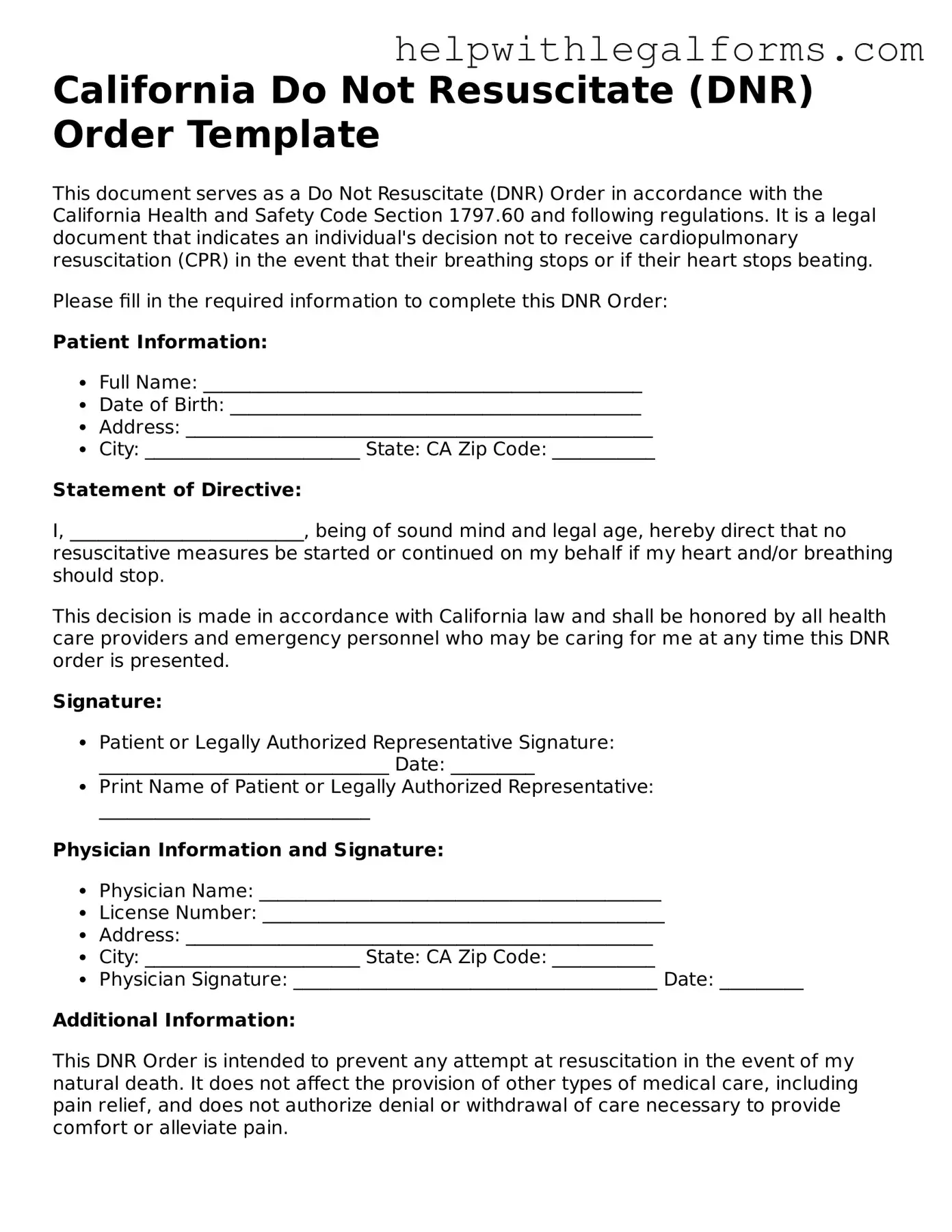What is a Do Not Resuscitate Order (DNR) in California?
A Do Not Resuscitate (DNR) Order in California is a legal document that tells healthcare professionals not to perform CPR (cardiopulmonary resuscitation) or advanced cardiac life support if a person's breathing or heartbeat stops. This is typically used by individuals with serious illnesses or who are at the end of their life, who choose not to undergo certain life-sustaining treatments. The aim is to allow natural death without aggressive interventions.
How can someone obtain a DNR order in California?
To obtain a DNR order in California, the individual must discuss their wishes with their healthcare provider. The healthcare provider will then review the person's health condition and, if appropriate, fill out the DNR form. The form must be signed by both the healthcare provider and the patient (or the patient’s legally recognized health care decision-maker if the patient is unable to sign themselves).
Where does a DNR order apply?
In California, a DNR order applies in all healthcare settings, including hospitals, nursing homes, and in the patient's own home. It also applies in non-healthcare settings if emergency medical personnel, such as paramedics or emergency medical technicians (EMTs), are called to the scene. The DNR order informs these professionals of the patient's decision to forgo resuscitation efforts.
Is the DNR order the same as an Advance Healthcare Directive?
No, a DNR order is not the same as an Advance Healthcare Directive, although both documents are related to end-of-life decisions. An Advance Healthcare Directive allows individuals to outline their healthcare preferences and appoint a healthcare agent to make decisions on their behalf if they're unable to do so. A DNR order specifically addresses the decision regarding CPR and advanced life support in cases where the patient's heart or breathing stops.
Can a DNR order be revoked or changed?
Yes, a DNR order can be revoked or changed at any time by the patient or their legally authorized decision-maker. To change their DNR status, the individual must communicate their new wishes to their healthcare provider, who will then update or cancel the DNR order as needed. It’s important to also communicate this change to any family members or others involved in the patient's care.
What is the difference between a prehospital DNR and a POLST form?
In California, a prehospital DNR specifically instructs emergency personnel not to perform CPR or other life-saving measures before a patient is hospitalized. A POLST (Physician Orders for Life-Sustaining Treatment), on the other hand, is a more comprehensive form that includes the patient's wishes regarding CPR but also addresses other types of life-sustaining treatments, such as intubation, antibiotic use, and feeding tubes, across various healthcare settings.
What should be done with the DNR order once it is completed?
Once a DNR order is completed, it should be kept in a location that is easily accessible to family members and caregivers and can quickly be presented to healthcare providers or emergency personnel when needed. Copies should also be given to the individual’s healthcare provider, local hospital, and potentially to family members or friends who are likely to be present in an emergency. If the individual has a POLST form as well, it is recommended to keep both documents together.
